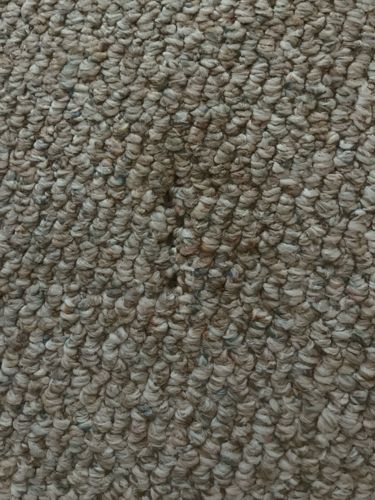Carpet Beetle
Scientific Name: Dermestidae (various genera and species, e.g., Anthrenus, Trogoderma)
Order & Family: Order: Coleoptera, Family: Dermestidae
Size: Larvae: 1-5 mm; Adults: 2-5 mm

Natural Habitat
Indoors, commonly found in carpets, rugs, upholstered furniture, clothing storage, attics, and museums. Outdoors, adults are found on flowering plants.
Diet & Feeding
Larvae feed on natural fibers such as wool, silk, fur, feathers, and dried animal products (e.g., dead insects, pet food). Adult carpet beetles feed on pollen and nectar from outdoor flowers.
Behavior Patterns
Carpet beetles undergo complete metamorphosis with egg, larva, pupa, and adult stages. Larvae are the damaging stage, feeding on natural fibers for several weeks to months. Adults are short-lived and primarily feed on pollen. They are generally slow-moving. The provided images appear to show a close-up of carpet fibers, possibly with a small dark specks that could be a carpet beetle larva, or simply debris within the carpet. Without clearer visual information, it is difficult to identify conclusively.
Risks & Benefits
Risks: Can cause significant damage to household items made of natural fibers, including carpets, clothing, and upholstered furniture. They do not bite or transmit diseases to humans. Benefits: Outdoors, adults can act as pollinators. Larvae can also be used in museums to clean skeletons of small animals.
Identified on: 8/12/2025